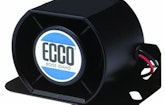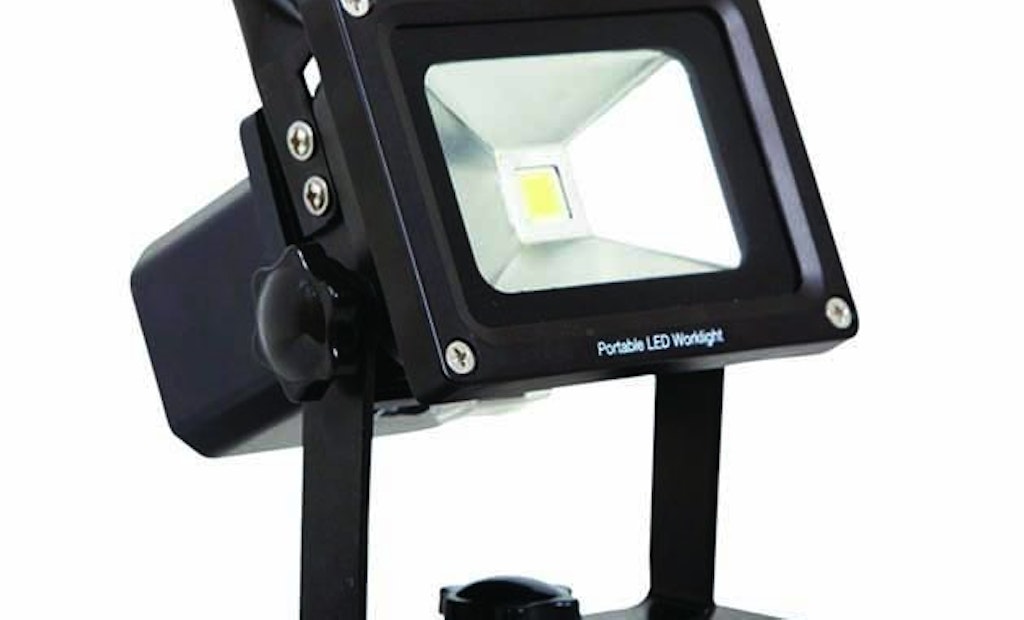Interested in Trucks?
Get Trucks articles, news and videos right in your inbox! Sign up now.
Trucks + Get AlertsWith a wealth of aftermarket vehicle and equipment safety devices available to onsite installers, deciding what to buy is a combination of knowing what you need and knowing what makes sense for any particular truck or machine in the yard.
Meeting safety regulations for any vehicle begins with observing the regulations covering that equipment – federal, state and local. For example, federal regulation 49 CFR 393.95 – “Emergency equipment on all power units” covering trucks and truck tractors specifies requirements for carrying fire extinguishers, spare fuses and warning devices for stopped vehicles (including flares and reflective triangles).
However, equipment owners may choose to go beyond the required regulations, upgrade older equipment, replace damaged equipment, or look for novel safety solutions for specific applications.
E-commerce has made a wealth of aftermarket safety devices available to consumers. But choosing what to buy should be governed by some simple guidelines:
If an item you’re replacing is covered by any regulation, ensure that the product you’re buying promises to meet that same regulation.
More is not always better. If you’re buying an item not covered by regulations, ensure that using that item does not interfere with another regulation. Again, citing 49 CFR 393.95, trucks can use other safety devices for a stopped vehicle in addition to approved reflectors and flares, “provided those warning devices do not decrease the effectiveness of the required warning devices.”
Ensure your vehicle has the real estate required to mount the new safety devices on dashboards, hood, doors, side panels or trailers.
If the device is electrically powered, ensure you have access to the vehicle’s accessory power system – and that the vehicle can produce enough power to operate the device.
Plan carefully to ensure that the item will actually improve safety and achieve the results you’re looking for in the intended vehicle.
Daniel Pfeffer is owner and president of Vehicle Safety Supply, an online retailer based in Mamaroneck, New York, which offers thousands of aftermarket safety products ranging from safety apparel to lighting products, alarms, mirrors and backup monitors. The company’s clients include truck repair and maintenance facilities, fleet garages, small businesses and do-it-yourselfers.
“In most cases, the people ordering these items are service professionals, so they know what they want and how to install it,” says Pfeffer. “But in most cases, the items in our catalog could be installed by someone with a good set of tools and familiarity with their vehicle.”
Rear observation camera systems
Backup and rearview cameras and their associated monitors represent a large sales category for the company.
“These are used both for backing up and to provide wide-angled rearview visuals while driving forward,” says Pfeffer. “These models come with fairly large dashboard monitors, larger than those you would find in passenger cars. The screens measure from 5 to 7 inches diagonally and obviously need to be located in the cab, so you need to make sure you have room for them.”
Options on camera systems include water resistance, automatic activation when backing up, infrared night vision, multi-camera monitors (capable of handling input from up to four cameras), automatic camera heating for cold temperatures, and digital video recorders.
Buyers can order entire systems including camera, cables and monitor, or order a la carte.
Backup alarms
While required on many vehicles by law, backup alarms and their familiar “beep, beep, beep” have reached a price point that makes them economically available to any equipment operator, both on- and off-road.
Pfeffer notes that backup alarms can be installed as stand-alone equipment, although they’re often used in tandem with rear observation camera systems.
“Depending on the model, you can select them for adjustable sensitivity, distance, single alarm tones, dual alarm tones, and decibel levels of alarm tones,” he says. “They’re one of the least expensive and most easily installed safety devices.”
Mirrors and assemblies
Mirrors come in a range of configurations and designs, from model-specific mirrors made by original equipment manufacturers to aftermarket replacement mirror assemblies and add-ons for specific needs. Customers choose from mirror styles that include West Coast heated mirrors that dissipate fog, to spot and fisheye mirrors that offer the widest views at the expense of some distortion.
“If you’re thinking of ordering brackets designed to mount a mirror to the hood or buy an extended side bracket to keep an eye on loads that you’re towing, plan ahead to ensure you’ll be getting the views you want,” Pfeffer says.
Installers should also make sure bracket assemblies won’t interfere with operation of onboard tools or hoses – or prevent them from getting through narrow lanes or garage doors.
Emergency safety kits
Owners of most vehicles would be wise to stock them with a comprehensive roadside emergency safety kit that minimally includes flares or reflective triangles, fire extinguisher, first-aid kit, reflective vest, jumper cables, flashlight and batteries. Kits for vehicles in colder climates may include a blanket, candles, matches, energy bars, shovel, tire chains, traction mats, fuel-line deicer – and even a whistle to attract attention if the vehicle is stranded off-road.
Many such kits are advertised as DOT compliant or DOT certified. However, as safety organization Tire Safety Group points out: “It is important to note that just because a kit is DOT certified, it does not mean that it is endorsed by the U.S. Department of Transportation. This government agency does not endorse any roadside emergency kit on the market.” DOT certification is related only to one item in the kit, indicating that the reflective triangles contained inside meet the requirements of FMVSS 125, which applies only to large trucks and buses.
Reflective clothing included inside these kits should also meet ANSI standards.
Pfeffer offers the kits online but notes that it’s one item that operators might be better off picking up locally. “Most safety add-ons, including triangle reflectors, are fairly light so they can be shipped inexpensively,” he says. “The total weight of the items make shipping uneconomical, when combined into a big kit.”
Safety lights
Traditional safety lights need to be replaced with lights of the same performance level. However, many vehicle operators want the extra visibility offered by additional lighting products, including LED light bars. Products range from typical truck applications to lighting products made specifically for excavators or forklifts.
“Many of the light products have shifted to LEDs, which are becoming brighter and brighter and use less power,” says Pfeffer. “Sometimes operators shift to new colors and patterns controlled by microprocessors just because they provide something different to notify traffic that they’re stopped on the road.”
The newest emergency lighting products gaining popularity are LED work lights powered by lithium batteries.
“They’re much more powerful and energy-efficient than they used to be,” say Pfeffer. “In an emergency situation, you’re not limited by the lengths of cables or tied to generators, and you can reserve vehicle power for onboard lights.”










